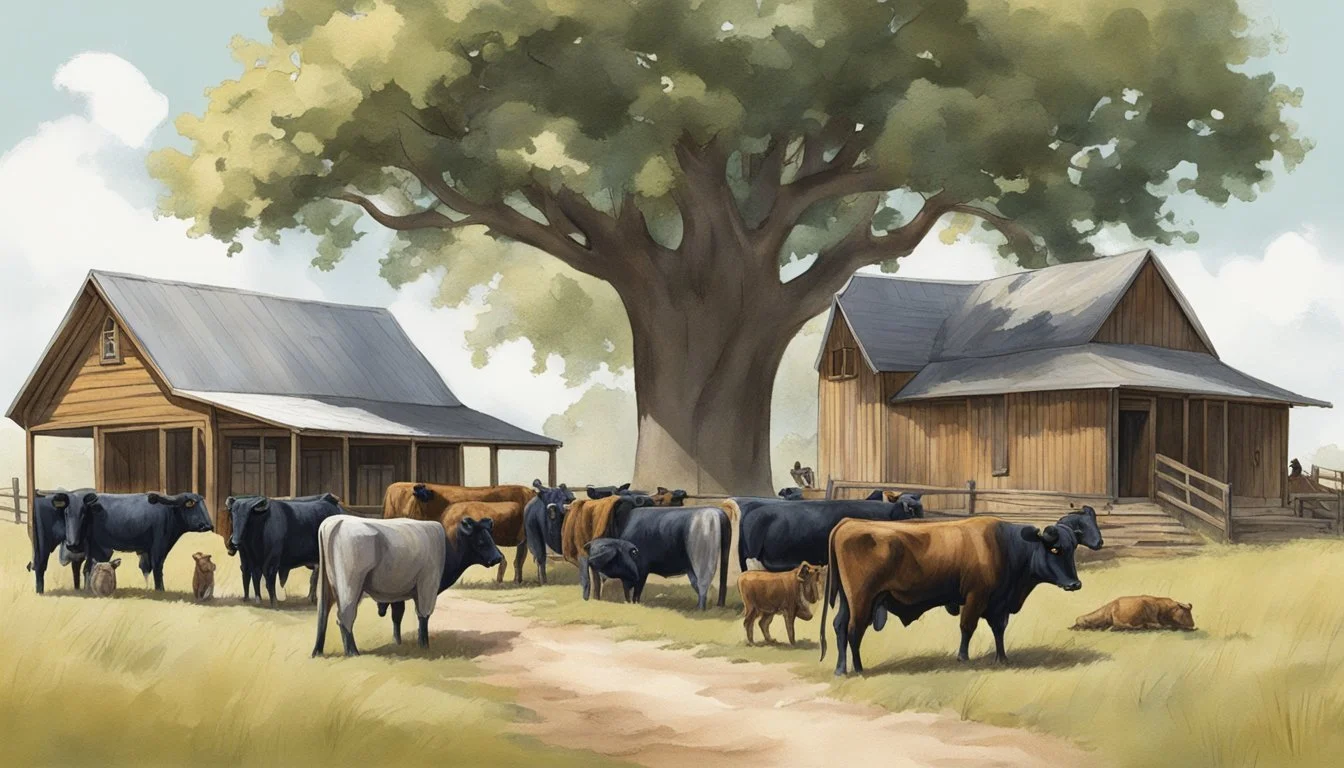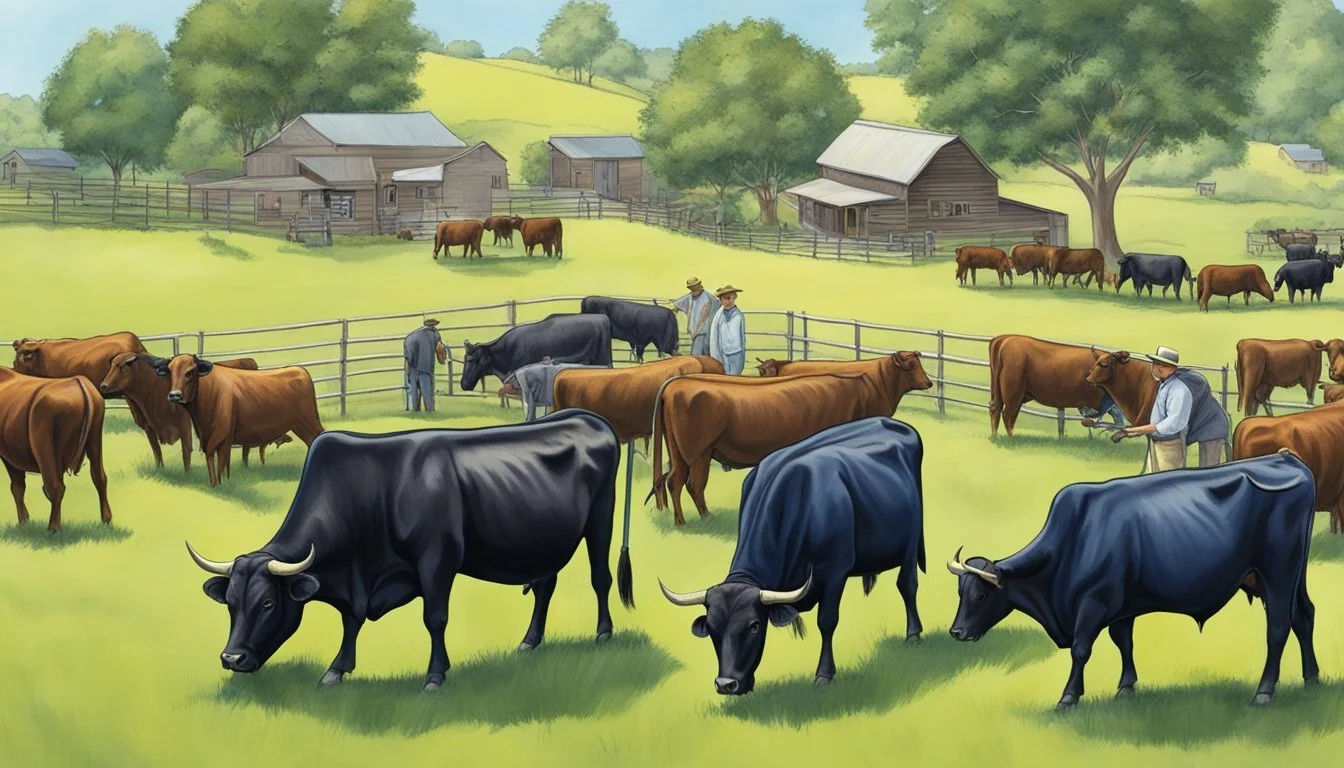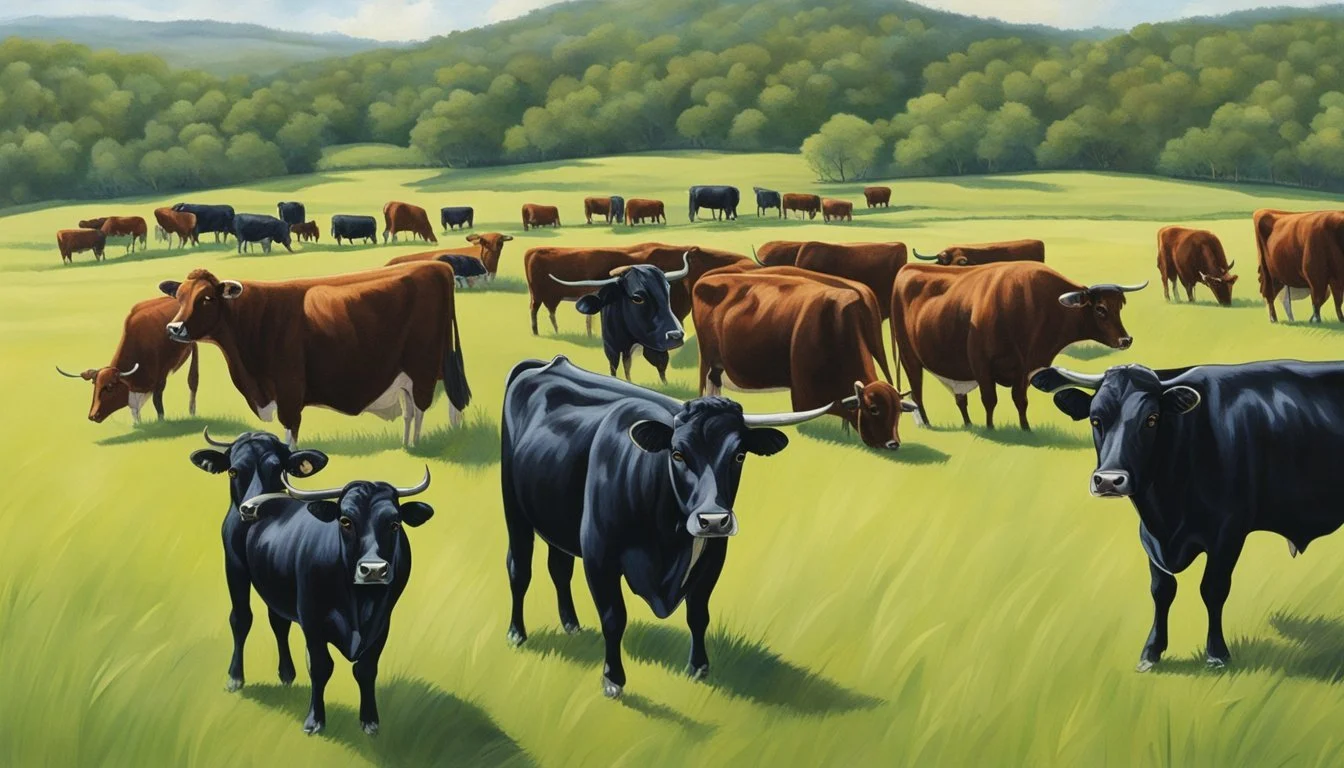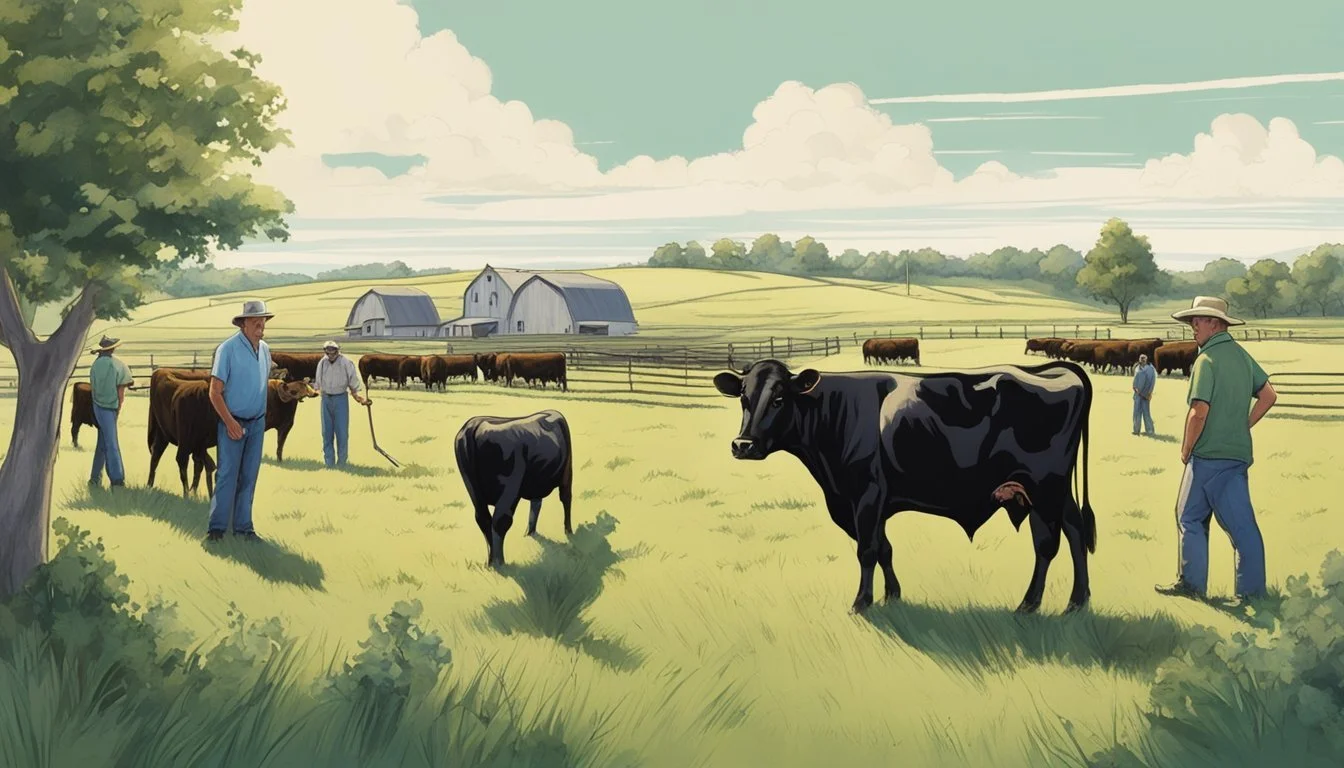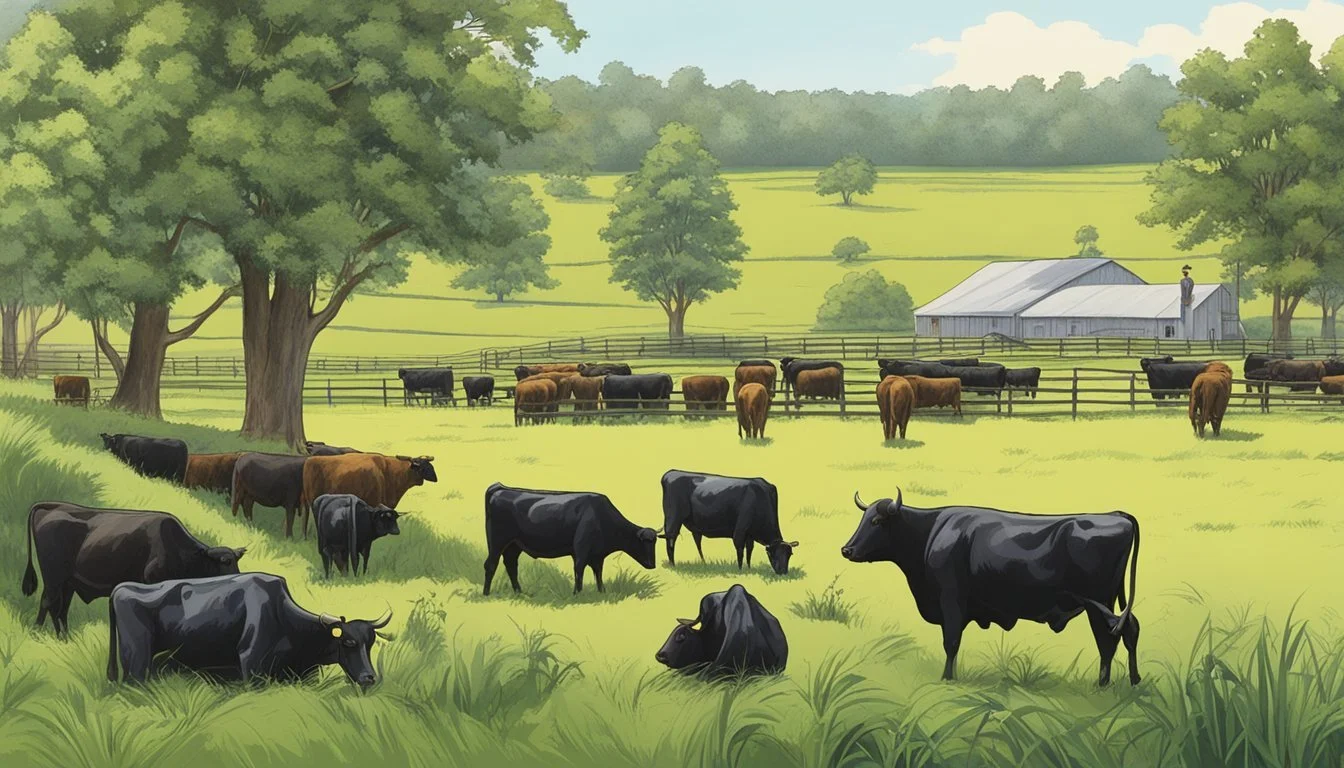Dexter Cattle and Community Building
Key Steps to Launch Your Own Breed Club
Dexter cattle have garnered a reputation for their versatility and suitability for small-scale farming, which has precipitated a growing interest in their conservation and breed promotion. Community building through the establishment of a local breed club can play a pivotal role in preserving the Dexter cattle breed, renowned for their ability to provide high-quality beef, milk, and even draft power. The creation of a breed club serves not only to facilitate the exchange of knowledge and best practices among Dexter enthusiasts but also to foster a sense of camaraderie and collective purpose within the community.
A local breed club dedicated to Dexters offers numerous benefits, including the maintenance of breed standards and the promotion of the Dexter cattle as a sustainable choice for modern farming. Such clubs can encourage responsible breeding practices and provide a central registry that assists in the tracking of pedigrees, which is essential for maintaining the genetic integrity and purity of the breed. Moreover, a breed club can become a beacon for educational outreach, highlighting the advantages of Dexters to the public and potentially attracting new breeders.
The formation of a Dexter cattle breed club can also stimulate the local economy by encouraging the participation of local farms in national networks and events. When breeders unite through a club, they leverage collective bargaining power for the procurement of supplies and services and they can more effectively market their cattle and products. Engaging with a wider audience through club activities helps to ensure the survival and growth of the Dexter cattle population and enriches the community by emphasizing sustainable agricultural practices and the shared value of heritage livestock preservation.
History and Origin of Dexter Cattle
The Dexter breed has its origins in the Emerald Isle and possesses a rich history marked by a journey from regional specialty to international presence.
Roots in Ireland
The Dexter cattle are an Irish breed originating in the south-western region of Ireland, specifically in County Kerry. They emerged in the 18th century and are believed to have been named after a man named Dexter, an agent of Lord Hawarden, who was instrumental in the development of the breed on Valentia Island. The Dexter cattle were initially considered part of the Kerry breed, recognized for their small, sturdy stature well-suited to the Irish landscapes.
Spreading to England and the United States
By the 19th century, Dexter cattle gained popularity, which led to their spread to England. The English Kerry and Dexter Cattle Society, formed in the late 1800s, began promoting the Dexter breed exclusively by the mid-1920s. They recorded significant numbers of the breed in their Herd Book, illustrating the breed's establishment in England. Subsequently, the Dexeters were brought to the United States by Irish immigrants who appreciated the breed's attributes. Recognizing their value, American breeders started establishing herds across the country, leading to the evolution of national organizations such as the American Dexter Cattle Association, formed in 1957. This association played a crucial role in the conservation of the breed, which faced near extinction in the US by the mid-1970s. The association is committed to preserving the Dexter cattle pedigree and promoting their history.
Understanding Dexter Cattle
Dexter cattle are a hardy breed known for their small size and adaptability to various farm environments. They exhibit a set of distinctive physical and behavioral traits that distinguish them from other cattle breeds.
Breed Characteristics
Size: Dexter cows typically stand between 36 to 44 inches tall at the shoulder and can weigh up to 750 pounds. They are considered a small breed which makes them suitable for smaller farms.
Hardiness: Dexters are a robust breed that can thrive in various climatic conditions. Their resilience and adaptability make them a preferred breed for diverse farming operations.
Color Variations
Coat Colors:
Black: The most common color, showcasing a thick and short coat.
Red: A warmer hue varying from light to deep red.
Dun: A pale brown shade that is also observed within the breed. Dexters may display a single solid color or a mix of these tones.
Physical and Behavioral Traits
Polled or Horned: While originally horned, some Dexter cattle are now naturally polled (without horns) due to selective breeding practices.
Chondrodysplasia: Some individuals may carry a gene for chondrodysplasia, a form of dwarfism specific to the breed, though it's not a defining trait of all Dexters.
Behavioral Traits:
Calf Rearing: Dexter cows are known for their maternal instincts and the care they provide to their calves.
Temperament: They generally exhibit a docile and friendly temperament but, as with all cattle, individual personalities can vary.
Understanding these characteristics is fundamental for anyone interested in breeding or raising Dexter cattle and is essential when considering forming a local breed club.
Breed Standards and Registration
When starting a local breed club for Dexter cattle, understanding the breed standards and registration processes as stipulated by official associations is crucial. These guidelines ensure the preservation and consistency of the breed's characteristics among herds.
American Dexter Cattle Association
The American Dexter Cattle Association (ADCA) is pivotal for breeders looking to register and transfer Dexter cattle. The ADCA provides regulations that safeguard owners, breeders, buyers, and sellers, maintaining accurate breed standards. Breeders can rely on the ADCA's comprehensive guidelines for registering Dexter cattle to ensure their herds meet the established standards.
Breed Description:
Purpose: Dexter cattle are recognized as a tri-purpose breed suitable for beef, milk, and draft.
Characteristics: Breeders are encouraged to focus on animals that display well-conformed and good temperament traits, efficient for all three purposes.
Horn Status: The breed includes both horned and naturally polled (born without horns) individuals.
Registration Essentials:
Herdbook Entry: To register a Dexter with the ADCA, information on the animal must be entered into the official herdbook.
Transfer of Ownership: Transfer regulations are in place to ensure the correct process is followed, maintaining the integrity of the lineage for all registered Dexters.
Dexter Cattle Society
The Dexter Cattle Society is an organization that outlines breed standards for Dexter cattle in the context of their dual-use for both beef and dairy production. Through the Society, breeders have access to guidelines that help in maintaining and enhancing breed quality.
Breed Standards:
Height: Standard measurements include bulls standing 42 to 48 inches at the rump, while cows range from 38 to 44 inches.
Dual Purpose: The Society emphasizes the importance of the Dexter as a breed with both beef and dairy qualities, guiding breeders to avoid extremes of dairy or beef.
Registration Guidelines:
Conservation Status: The Society is attentive to the Dexter's status and promotes measures to secure genetic diversity.
Breeder Responsibility: Those who are part of the Society are tasked with upholding the breed standards in their practices. They must ensure that every registered animal conforms to the detailed descriptions provided.
Membership in these associations, adherence to their standards, and participation in their registration processes are cornerstones for local breed clubs focused on Dexter cattle. These protocols are not merely administrative—they are foundational to breed preservation and community building among Dexter cattle enthusiasts.
The Dual-Purpose of Dexter Cattle
Dexter cattle serve a vital role for smallholders due to their versatile nature. They efficiently provide both high-quality meat and nutritious dairy products, making them an exceptional dual-purpose breed.
For Meat Production
Dexter cattle are highly valued for their beef, which is known for being lean, well-marbled, and rich in flavor. The meat yield from Dexter cattle is more suitable for smaller families as these animals are smaller in stature compared to other beef breeds.
Key Points for Meat Production:
Lean Meat: The beef is less fatty than many commercial breeds, which often appeals to health-conscious consumers.
Flavor Profile: Dexter beef is reported to have a distinctive taste, highly prized by those who prefer a more robust beef flavor.
For Dairy Production
In terms of dairy, Dexter cows are prolific producers given their size, offering a significant quantity of milk with high butterfat content. Their milk is ideal for creating various dairy products such as cheese and butter.
Key Points for Dairy Production:
Milk Yield: Although smaller in size, Dexters can produce about 1.5 to 2.5 gallons of milk per day.
Butterfat Content: The milk from Dexter cattle tends to have a butterfat percentage ranging from 4% to 5%.
It's vital to recognize the importance of these animals in small-scale farming operations and homesteads, where their dual-purpose capabilities allow for diverse and sustainable agricultural practices.
Raising Dexter Cattle
When it comes to raising Dexter cattle, attention to their diet, health, and reproductive management is essential for thriving herds. These small but robust animals require specific care to reach their potential in weight, fertility, and overall well-being.
Feeding and Nutrition
Dexter cattle are efficient grazers that can thrive well on pasture-based diets. For optimal growth and health, their feeding regimen should include:
High-quality forage: Include a mixture of grasses and legumes to provide a balanced diet.
Grain supplementation: Offer grains during periods of low forage availability or to meet higher nutritional needs during lactation.
A table for a simple feeding guideline by age:
Age Group: Calves
Primary Diet: Mother's milk
Supplemental Feed: Calf starter grain, as needed
Age Group: Weaned Heifers
Primary Diet: Pasture
Supplemental Feed: Grain during lean pasture months
Age Group: Mature Cows
Primary Diet: Pasture
Supplemental Feed: Grain during pregnancy or lactation
Age Group: Bulls
Primary Diet: Pasture
Supplemental Feed: Higher protein grain mix
Health and Veterinary Care
Routine health checks and preventive care ensure the longevity and productivity of Dexter cattle. Key health considerations include:
Vaccinations: Administer regularly to prevent common bovine diseases.
Parasite control: Implement deworming protocols to mitigate internal and external parasites.
Hoof care: Regular trimming to prevent foot issues.
Be vigilant for signs of illness such as changes in behavior, appetite, or milk production, and consult a veterinarian if needed.
Breeding Practices
Dexter cattle are esteemed for their high fertility and generally easy calving. Responsible breeding practices encompass:
Genetic diversity: Select mating pairs to avoid inbreeding and to perpetuate desirable traits.
Monitoring for calving difficulties: Though rare in Dexters, be prepared to assist or seek veterinary help.
Recordkeeping: Maintain detailed records of breeding cycles, lineage, and any health issues for better herd management.
Selective breeding can optimize traits like size and weight, with mature cows reaching up to 750 pounds and standing 36-44 inches tall.
Starting and Managing a Dexter Breed Club
A local Dexter Breed Club serves as a cornerstone for uniting breeders, promoting the breed, and providing education about Dexter cattle. It is a vital platform for community building and increasing awareness about this versatile livestock.
Building a Community of Breeders
To establish a thriving community, recruitment of dedicated breeders is crucial. Steps to building this community involve:
Identifying Interests: Engage local Dexter cattle owners by identifying shared interests and goals.
Communication Channels: Create email lists or social media groups to facilitate ongoing dialogue and updates.
A structured approach, including regular meetings and clear communication, fosters a solid foundation of trust and cooperation among breeders.
Organizing Club Activities and Events
A Dexter Breed Club should plan and host a variety of activities to maintain an active and engaged membership. Key activities include:
Field Days: Clubs can organize field days for hands-on learning experiences.
Showcases: Annual showcases highlight the breed's qualities and encourage friendly competition.
Regular events offer opportunities for members to learn, share experiences, and showcase their livestock.
Promotion of the Breed and Education
Promoting the Dexter breed and educating the public is paramount. Effective strategies involve:
Informational Material: Distribute brochures and guides detailing breed characteristics and benefits.
Workshops: Host workshops on breeding, care, and the tri-purpose utility of Dexters.
Through active promotion and education, clubs can enhance awareness and appreciation of Dexter cattle within the broader community.
Conservation and Advancement of the Breed
In the context of Dexter cattle, conservation and breed advancement are closely linked endeavors aimed at maintaining the breed's unique characteristics and ensuring its continuance for future generations.
The Role of Breed Clubs in Conservation
Breed clubs play a pivotal role in the conservation of Dexter cattle. These clubs, often formed by enthusiasts and breeders, serve as a centralized resource for sharing knowledge, coordinating conservation efforts, and advocating for the breed. They work to promote the breed’s historical significance, manage herd registries, and provide education on responsible breeding practices that maintain the breed's integrity.
Conservation strategies implemented by breed clubs may include:
Establishment of herd books and maintenance of lineage records
Support for local and national shows to raise public awareness
Coordination of efforts with conservation organizations
Breeding Programs and Genetic Diversity
Breeding programs are essential for maintaining genetic diversity within the Dexter cattle population, which is critical for the breed's long-term viability. Genetic diversity helps safeguard the breed against diseases and allows it to adapt to various environmental conditions.
Key aspects of breeding programs include:
Monitoring genetic health and variability via genetic testing
Encouraging the breeding of underrepresented bloodlines
Implementing selection criteria that avoid inbreeding while also emphasizing the breed's desirable traits
These breeding practices ensure a robust genetic pool for Dexter cattle and aid in their recovery and advancement. Breed clubs often support these programs by disseminating information and providing guidance to breeders on best practices.
Practical Aspects of Keeping Dexter Cattle
Dexter cattle are a small breed known for their adaptability and ease of handling, making them a practical choice for small-scale farms and homesteaders. They excel in efficiency, particularly on limited acreage, thriving with less space and resources than larger breeds.
Shelter and Housing
Dexter cattle require basic shelter to protect them from extreme weather conditions. Their smaller size means that they need comparatively less space; a simple barn or three-sided shed can suffice. The structures should be sturdy and provide:
Adequate Ventilation: To prevent respiratory issues.
Dry Bedding: To maintain warmth and comfort.
Easy Access to Food and Water: Essentials should be within reach to maintain their health.
Handling and Training
These cattle are often praised for their temperament, which lends itself to ease of handling. They are generally docile and easier to manage than larger breeds. For successful handling and training, one should:
Use Gentle Techniques: Dexter cattle respond well to calm and consistent handling.
Introduce Handling Early: Regular interaction from a young age helps in training.
Implement Routine: Creating and following a routine facilitates easier handling and care.
Utilization on Small Farms
Dexter cattle are particularly well-suited for small farms due to their efficiency in converting feed into milk or meat on limited acreage. They are versatile and adaptable, able to graze on less-than-ideal pasture that might not support larger breeds. On small farms, they serve multiple purposes:
Dairy Production: Despite their size, they can produce a respectable amount of quality milk.
Meat Production: They offer lean meat with a good yield, especially considering their smaller stature.
Grazing Maintenance: They can effectively manage pasture growth, reducing the need for mechanical mowing.
By focusing on the practical aspects of Dexter cattle, small farm owners and homesteaders can harness the advantages of this breed to create a sustainable and efficient agricultural endeavor.

